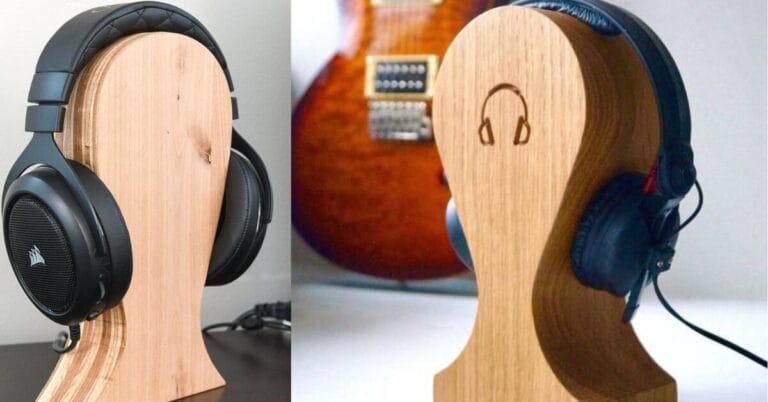How to Use Bone Conduction Headphones Correctly? easy guide

Commonly, the headphones go inside or over your ears and block outside noises. This can be unsafe when you’re walking or cycling because you might not hear things like cars or people around you. Also, some people find regular headphones uncomfortable after wearing them for a long time.
Bone conduction headphones don’t block your ears. They sit on your cheekbones and send sound through your bones, so you can still hear what’s happening around you. This makes them safer and more comfortable.
Want to know how to use bone conduction headphones the right way? Keep reading to learn how they work and how to get the best experience!
How to Use Bone Conduction Headphones Correctly?
1. Place Them on Your Cheekbones
Bone conduction headphones should sit just in front of your ears, on your cheekbones. They should never cover or go inside your ears.
2. Make Sure They Fit Well
Adjust the band or strap so that the headphones feel snug but not too tight. They should stay in place when you move, especially during activities like running or cycling.
3. Adjust the Volume
Keep the volume at a comfortable level. You don’t need to turn it up too high because the sound goes directly through your bones. High volume can hurt your hearing.
4. Keep Your Ears Open
Remember, bone-conduction headphones let you hear your surroundings. Don’t cover your ears with anything else, like earplugs so that you can stay safe and aware.
5. Charge Your Headphones
Before using them, make sure the headphones are fully charged. This will give you the longest playtime without interruptions.
6. Clean and Store Properly
After using them, wipe them down with a damp cloth to remove sweat or dirt. Store them in a safe, dry place when not in use.
How Do Bone Conduction Headphones Work?
Bone Conduction vs. Air Conduction
Traditional headphones rely on air conduction, which transmits sound waves through the air and into your ear canal, vibrating your eardrum to produce sound. Bone conduction headphones work differently. They send sound vibrations directly through your skull bones to the inner ear, bypassing the outer and middle ear entirely.
Understanding Sound Transmission Through the Skull
Bone conduction headphones sit on your cheekbones, close to your ears. They create vibrations that travel through the bones in your skull. These vibrations go straight to your inner ear, and your brain turns them into sound.
How to Wear Bone Conduction Headphones?
Placement of the Headphones
To get the best audio quality from bone-conduction headphones, it’s important to place them correctly. They should sit just in front of your ears, resting on your cheekbones rather than on your ears.
Adjusting for a Snug Fit
Bone conduction headphones are designed to be worn securely, so they don’t move during physical activities. Adjust the band around your head or behind your neck to ensure a snug fit without causing discomfort.
Ensuring Proper Contact for Sound Clarity
Proper contact with your skin is important for clear sound transmission. Make sure the pads of the headphones are firmly touching your cheekbones to get the best audio experience.
Adjusting the Volume
How Loud Should You Keep the Volume?
Since bone conduction headphones transmit sound differently, it’s essential to keep the volume at a moderate level. High volumes can distort sound quality and potentially harm your hearing.
Balancing Sound Clarity with Comfort
Find a balance between clear sound and comfort. You don’t need to increase the volume too much because bone conduction delivers sound directly to your inner ear, which is more efficient than air conduction.
Benefits of Using Bone Conduction Headphones
Maintaining Situational Awareness
One of the best advantages of bone-conduction headphones is that they allow you to hear what’s happening around you while still enjoying your audio content. This is particularly useful for activities such as jogging or cycling, where awareness of your environment is crucial for safety.
Ideal for Hearing-Impaired Individuals
Bone-conduction headphones can help people with certain hearing problems. They don’t use the eardrum to send sound. Instead, they send sound through vibrations to the inner ear. This means people with damaged eardrums might still hear sounds using these headphones.
Comfort for Long-Time Wear
Bone conduction headphones are more comfortable than other headphones because they don’t press on your ears or make them hot. They are light and easy to wear for a long time, making them great for long runs or working at the office.
Pros and Cons of Bone Conduction Headphones
Pros
- Keeps Ears Open: You can hear your surroundings while listening to music, making them safer for outdoor activities.
- Comfortable for Long Use: They don’t press on your ears or cause discomfort, making them great for extended wear.
- Good for Hearing Impairments: They can be useful for people with certain types of hearing loss because they bypass the eardrum.
Cons
- Sound Quality: They may not offer the same audio quality as traditional headphones, especially for bass-heavy music.
- Sound Leakage: They can leak sound, so others around you might hear what you’re listening to.
- Price: High-quality bone conduction headphones can be more expensive than regular headphones.
Situations Where Bone Conduction Headphones Excel
Outdoor Running and Cycling
Bone-conduction headphones are perfect for runners and cyclists. You can listen to music and still hear cars, people, and other important sounds around you, helping you stay safe.
Listening in Noisy Environments
Bone conduction headphones are also beneficial in noisy environments where you still need to hear external sounds. While they don’t block out ambient noise, they ensure you hear your audio even when it’s loud around you.
During Workouts or Exercise
These headphones are a popular choice for people who exercise. They’re sweat-resistant, and the open-ear design prevents the discomfort of in-ear buds or hot, sweaty ears from over-ear headphones.
Maintenance Tips for Bone Conduction Headphones
Cleaning the Device
It’s important to clean your headphones regularly, especially if you use them during workouts. After each use, wipe them with a damp cloth, especially where they touch your skin, to keep them clean and hygienic.
Proper Storage
When not in use, store your headphones in a protective case to avoid scratches and prolong their lifespan. Keeping them in a dry, safe place is key to preventing damage.
Charging and Battery Life Management
Always ensure that your headphones are charged before using them. Avoid overcharging, as this can reduce the battery’s overall lifespan over time.
Common Mistakes to Avoid
Wearing Over the Ears Instead of Correct Position
A common mistake is wearing bone conduction headphones like regular ones, over your ears. Ensure they sit correctly on your cheekbones for the best audio performance.
Turning the Volume Too High
Turning the volume too high can lead to distorted sound quality and could also cause hearing damage. Keep the volume at a comfortable, moderate level.
Can Bone Conduction Headphones Cause Hearing Damage?
How Bone Conduction Impacts Hearing
While bone conduction headphones are generally safer for your ears compared to traditional headphones, using them at high volumes for extended periods can still lead to hearing damage. It’s essential to monitor your volume levels.
Safety Tips for Prolonged Use
To prevent potential hearing loss, limit your listening time to safe levels and take regular breaks. Use your bone conduction headphones responsibly.
Conclusion
Bone conduction headphones offer a unique and comfortable way to listen to audio while staying aware of your surroundings. They’re great for outdoor activities, exercising, and for people with hearing impairments.
By using and caring for them properly, you can enjoy great sound quality and keep your ears safe and healthy.
FAQs
Can You Use Bone Conduction Headphones Underwater?
Some models are waterproof and can be used underwater, but always check the specific IP rating before using them in water.
Are Bone Conduction Headphones Safe for Children?
Yes, bone conduction headphones are generally safe for children, but ensure that the volume is kept at a reasonable level to protect their hearing.
Can Bone Conduction Headphones Replace Hearing Aids?
No, bone conduction headphones are not a replacement for hearing aids, but they can help people with specific types of hearing loss enjoy audio content.
Do Bone Conduction Headphones Leak Sound?
Yes, they can leak some sound, especially at high volumes, but it is generally not disruptive to others around you.
What Is the Battery Life of Bone
The battery life of bone conduction headphones usually ranges from 6 to 10 hours on a single charge. Some high-end models can last up to 12 hours or more. Charging them typically takes 1 to 2 hours. Always check the manufacturer’s specs for your specific model to get accurate information.






